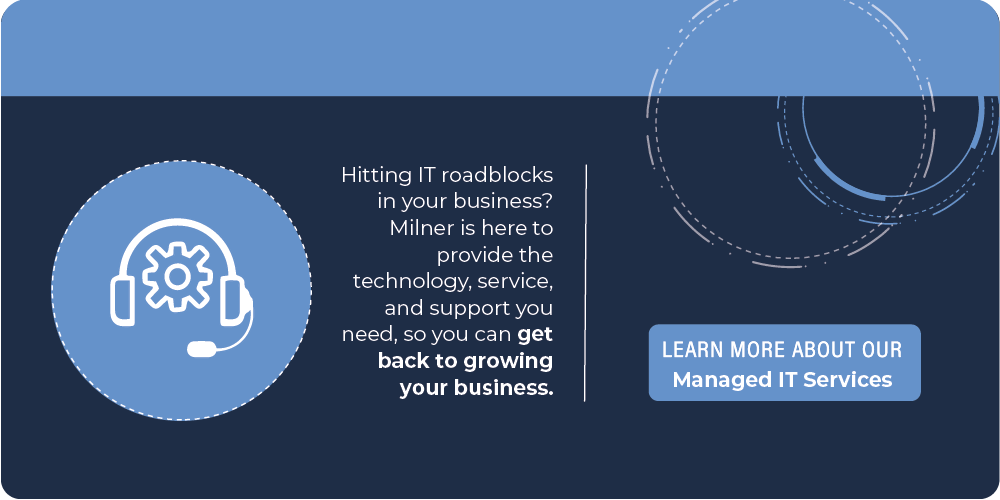Companies typically hire IT teams or employ security specialists to protect themselves against cybercrime. But as individuals, we’re generally on our own when it comes to protecting ourselves and our sensitive information.
During the pandemic, as people spent more time doing normal day-to-day routines from home including work, shopping, and entertainment, they also spent more time on their computers and online. As this trend of spending time online while at home is only likely to increase, it’s important that we all remain vigilant as our online time, and thus our online vulnerabilities to cybercrime, increases. During 2020, more than 155.8 million people were affected by data breaches. According to Adobe Digital Insights, consumers have already spent $99.1 billion since the start of November 2021, and according to Shopify, online-only businesses raked in sales of around $2.9 billion on Black Friday alone, an increase of 20% compared to last year.
For cybercriminals, clearly both consumers and retailers shifting to e-commerce is a gold rush. This makes it all the more crucial that online users take precautions to keep their identities and assets safe.
For a good place to start protecting your identity and your wallet, following these six cybersecurity tips when shopping online:
-
Protect your mobile devices
As malicious code designed especially for mobile devices is on the rise, so too is the risk it poses to you and your family. If you access financial accounts, such as your bank account and credit card information, that are tied to your phone, or if you do any online shopping on your mobile devices, make sure that they are protected against attacks.
-
Shop at home with a VPN
Never shop online or check your bank account using public or free Wi-Fi. Hackers are known to sit on these networks, actively scanning for data transmissions containing credentials, financial information, personal data, etc. that they can then sell for personal profit. They have even been known to mimic public hotspots (or even your favorite cafe’s Wi-Fi) for this same reason. If you need to check your bank account on the go, turn off your phone’s Wi-Fi and use your cellphone’s network instead.
The most popular and effective means of protecting yourself and your network from malicious attacks is through the use of virtual private networks (VPNs). VPNs create a secure connection between you and the internet, providing you with an extra layer of privacy and anonymity. VPNs do this by encrypting your internet connection and hiding your real IP address. This includes hiding your browsing history, changing your online location by connecting you through a server in a different country and hiding all of your activities on the internet.
-
Stay Suspicious
Keep a healthy degree of skepticism about anything you receive from digital sources, including emails, texts, chat messages, and even phone calls. Be especially suspicious of anything with an urgent call to action: most cybercrime is done through phishing attacks that pretend to need money immediately to keep your power on, or maintain your cell phone service.
-
Be password savvy
Never reuse passwords. By using unique passwords for every service, in the event that one site is compromised, the login credentials can't be used for any other site. With so many password protected sites to remember, using unique passwords for every site is truly only possible through the use of a password manager. Giving your passwords to a company may seem scary at first, but it's definitely safer than using the same password all over the internet. For more information on how to properly secure your passwords, check out this infographic.
-
Be internet savvy
Ensure that you only shop on websites with an SSL certificate. The website you are making purchases from should begin with https instead of http, otherwise it is not secure. Without the security feature of an SSL certificate, malicious cybercriminals will be able to steal your personal and financial information. Your browser's address bar should read HTTPS (not just HTTP). The "S" represents secure communication and signifies that all data passed between your browser and the website is encrypted.
-
Click cautiously
Every click matters, whether it's phishing emails, text messages that suggest false sales, or unsecured retail sites where your credit card information can be exposed. Take the time to think before you click. Cybercriminals count on you being too frazzled or distracted to pay attention to what you’re doing. Don’t let them pull one over on you and take the time to assess links and websites before giving them any of your data. A good rule to follow is the rule of R2: Read the headers! The reply to and return path must be the same.
Using these six cybersecurity steps when shopping online is an important first step to being a more responsible and cyber-secure online consumer. Cybercriminals will be able to steal personal information more easily as online shopping continues to grow. If you need more information on how to better protect yourself and your business from cybercrime, contact Milner for help.

